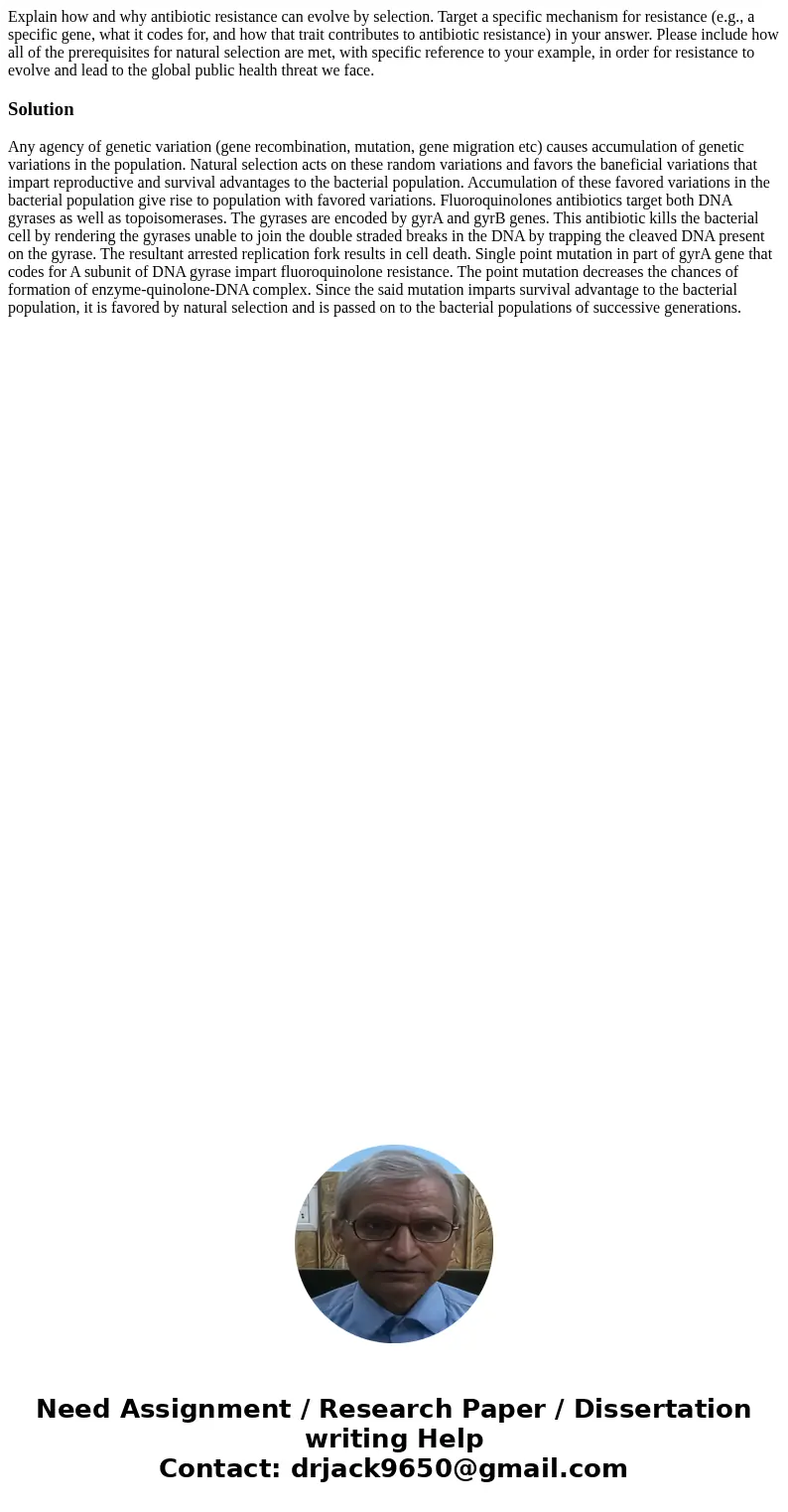Explain how and why antibiotic resistance can evolve by sele
Solution
Any agency of genetic variation (gene recombination, mutation, gene migration etc) causes accumulation of genetic variations in the population. Natural selection acts on these random variations and favors the baneficial variations that impart reproductive and survival advantages to the bacterial population. Accumulation of these favored variations in the bacterial population give rise to population with favored variations. Fluoroquinolones antibiotics target both DNA gyrases as well as topoisomerases. The gyrases are encoded by gyrA and gyrB genes. This antibiotic kills the bacterial cell by rendering the gyrases unable to join the double straded breaks in the DNA by trapping the cleaved DNA present on the gyrase. The resultant arrested replication fork results in cell death. Single point mutation in part of gyrA gene that codes for A subunit of DNA gyrase impart fluoroquinolone resistance. The point mutation decreases the chances of formation of enzyme-quinolone-DNA complex. Since the said mutation imparts survival advantage to the bacterial population, it is favored by natural selection and is passed on to the bacterial populations of successive generations.

 Homework Sourse
Homework Sourse